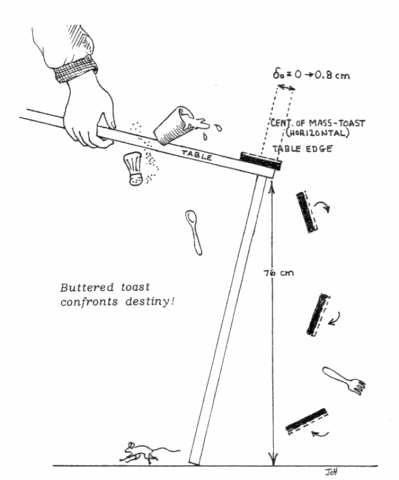 |
Science Frontiers ONLINE No. 138: NOV-DEC 2001 |
|
|
The Dynamics Of Oleaginated Carbohydrate Parallelopipeds
In the study reported here it is found that the experimentally determined free fall angular velocity of a board, tumbling off the edge of a table, can only be predicted at all accurately if slipping is taken into account. The size and shape of the board used in the calculations and in the experiments were roughly the same as that of a piece of toast. In addition, it is found that the board, tumbling from a standard table of height 76 cm, will land butter-side down (neglecting any bounce) for two ranges of overhang (δo). δo is defined as the initial distance from the table edge to a vertical line drawn through the center of mass when the board is horizontal. For our board (length 10.2 cm) the approximate ranges of overhang are 0-0.8 and 2.7-5.1 cm. The importance of the 0-0.8 cm (only 2% of all possible overhangs for which tumbling is possible) favoring a butter-side down landing should not be overestimated when pondering the widely held belief that toast, tumbling from a table, usually falls butter-side down.
(Bacon, M.E., et al; "A Closer Look at Tumbling Toast," American Journal of Physics, 69:38, 2001.)
 |
Other Sites of Interest
|